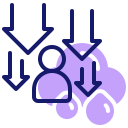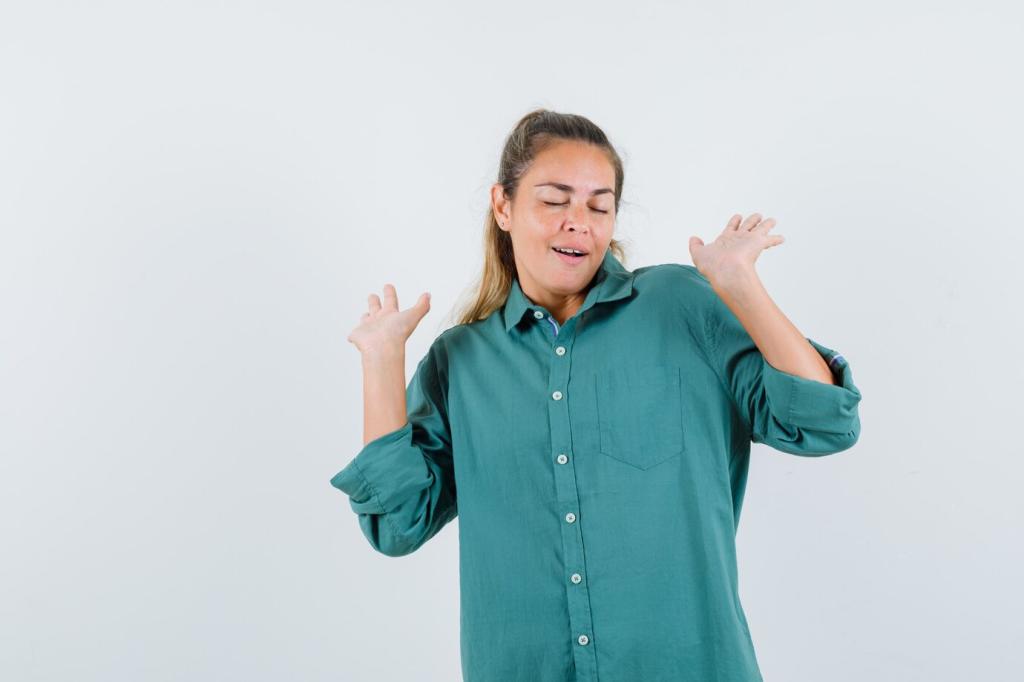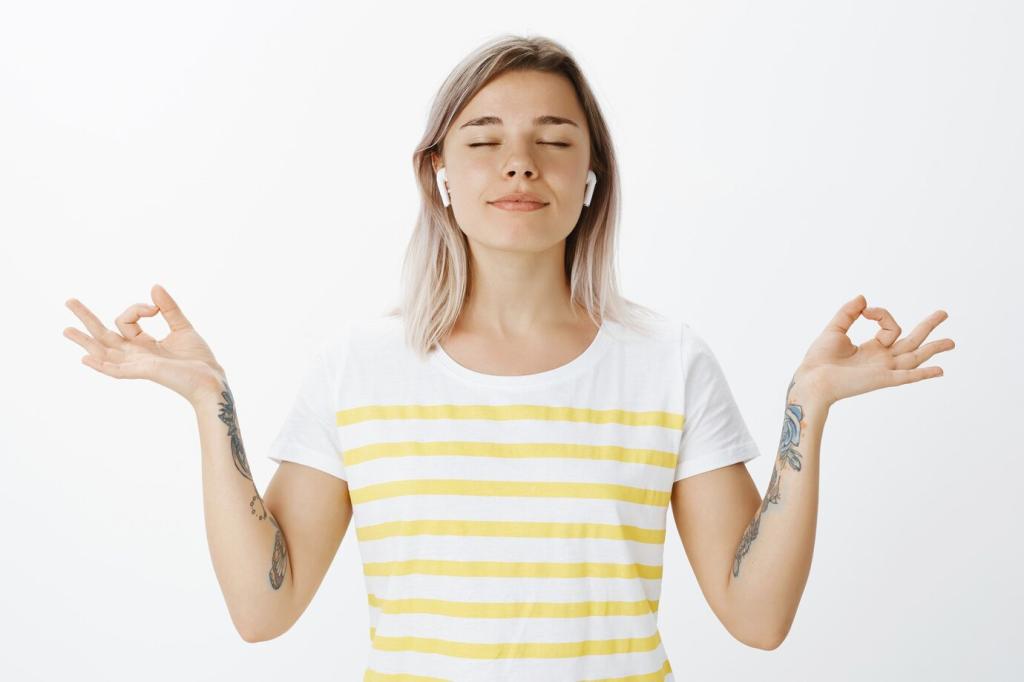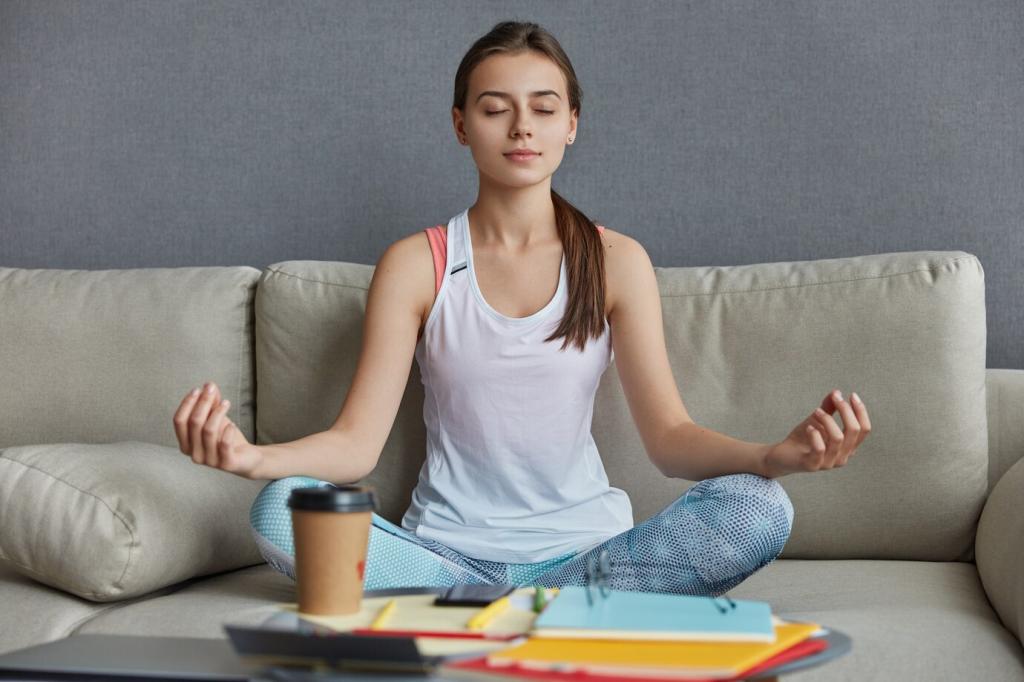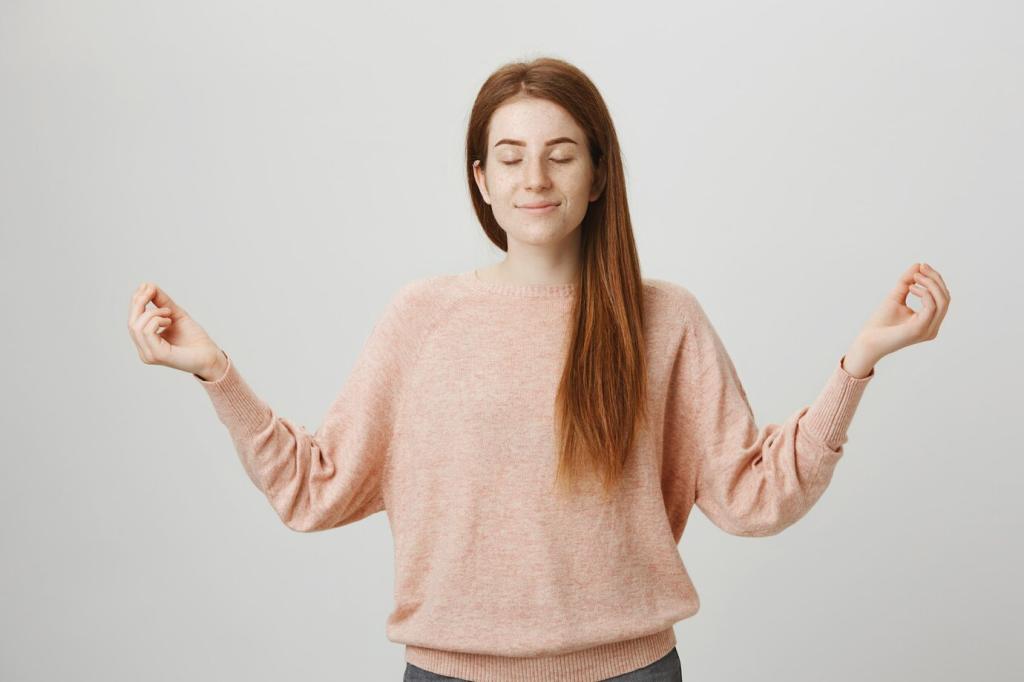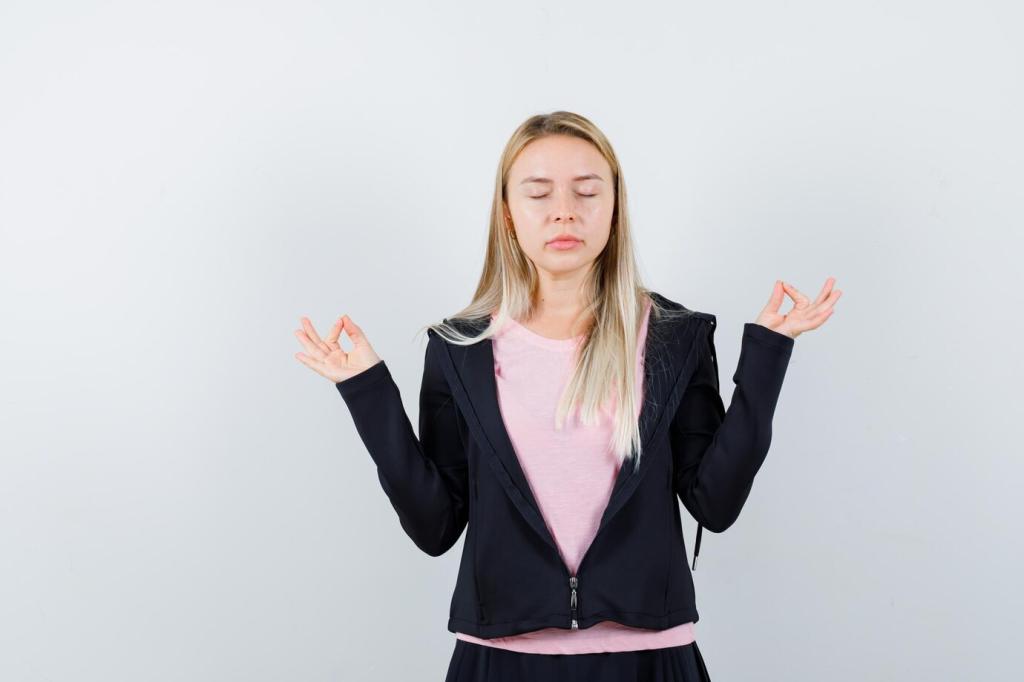Advanced Methods: Metaphor, Motion, and Memory
Imagine warmth melting tight spots from crown to toes. See tension as grains of sand sliding down to your feet and draining into the earth. This metaphor invites muscles to release in order, guiding the body to cooperate with the mind’s story.
Advanced Methods: Metaphor, Motion, and Memory
Before a stressful event, visualize yourself moving fluidly through it—steady voice, relaxed shoulders, soft gaze. Include sensations of success: cool air on your skin, lightness in your chest. Athletes use this often; you can, too. Tell us what you’ll rehearse this week.
